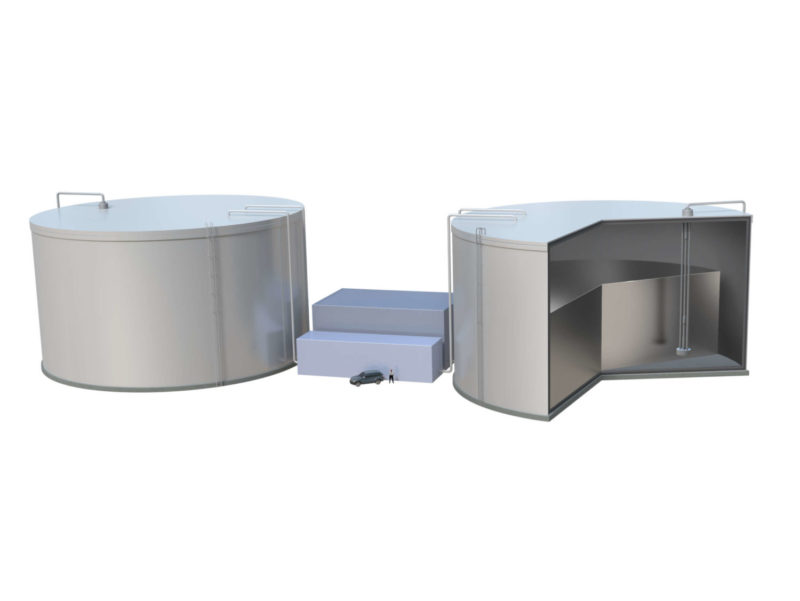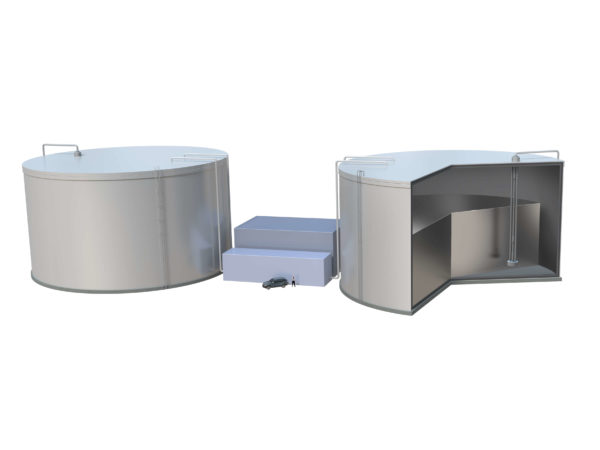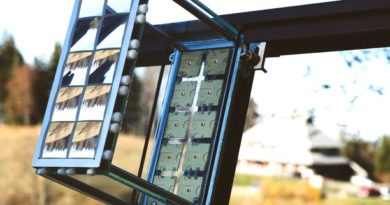MIT’s “Sun in a Box” targets the storage conundrum for renewables

A team of scientists from the Massachusetts Institute of Technology (MIT) have come up with a conceptual design for a system, capable of storing renewable energy, such as solar and wind power, and deliver that energy back into an electric grid on demand. The system may be designed to power a small city not just when the sun is up or the wind is high but around the clock.
Presented in the journal, Energy and Environmental Science, the system has been named “Sun in a Box” owing to its design. The new design stores heat generated by excess electricity from solar or wind power in large tanks of white-hot molten silicon and then converts the light from the glowing metal back into electricity when it’s needed.
“Even if we wanted to run the grid on renewables right now we couldn’t because you’d need fossil-fueled turbines to make up for the fact that the renewable supply cannot be dispatched on demand,” said Asegun Henry, Associate Professor in the Department of Mechanical Engineering. “We’re developing a new technology that, if successful, would solve this most important and critical problem in energy and climate change, namely, the storage problem.”
The new storage system stems from a project in which the researchers looked for ways to increase the efficiency of a form of renewable energy known as concentrated solar power. Which uses mirrors to concentrate sunlight onto a central tower, where the light is converted into heat that is eventually turned into electricity.
“The reason that technology is interesting is, once you do this process of focusing the light to get heat, you can store heat much more cheaply than you can store electricity,” Henry said. “This technology has been around for a while, but the thinking has been that its cost will never get low enough to compete with natural gas. So there was a push to operate at much higher temperatures, so you could use a more efficient heat engine and get the cost down,” he added.
The team then looked for a medium other than salt (used as a medium in CSP) that might store heat at much higher temperatures. They initially proposed a liquid metal and eventually settled on silicon, which can withstand incredibly high temperatures of over 4,000 degrees Fahrenheit.
After a year, the team finally outlined their concept for a new renewable energy storage system, which they call TEGS-MPV, for Thermal Energy Grid Storage-Multi-Junction Photovoltaics. Which they propose will be converting electricity generated by any renewable source, such as sunlight or wind, into thermal energy, via Joule heating, a process by which an electric current passes through a heating element. The system could be paired with existing renewable energy systems, such as solar cells, to capture excess electricity during the day and store it for later use.

The system would consist of a large, heavily insulated, a 10-meter-wide tank made from graphite and filled with liquid silicon, kept at a “cold” temperature of almost 3,500 degrees Fahrenheit. A bank of tubes, exposed to heating elements, then connects this cold tank to a second, “hot” tank. When electricity from the town’s solar cells comes into the system, this energy is converted to heat in the heating elements. Meanwhile, liquid silicon is pumped out of the cold tank and further heats up as it passes through the bank of tubes exposed to the heating elements, and into the hot tank, where the thermal energy is now stored at a much higher temperature of about 4,300 F.
When electricity is needed, the hot liquid silicon, which glows at the high temperature, is pumped through an array of tubes that emit that light. Specialised solar cells, known as multi-junction photovoltaics, then turn that light into electricity, which can be supplied to the town’s grid. The now-cooled silicon can be pumped back into the cold tank until the next round of storage acting effectively as a large rechargeable battery.
Read More about the project here.




